Name Yevgeny Khaldei | Role Photographer | |
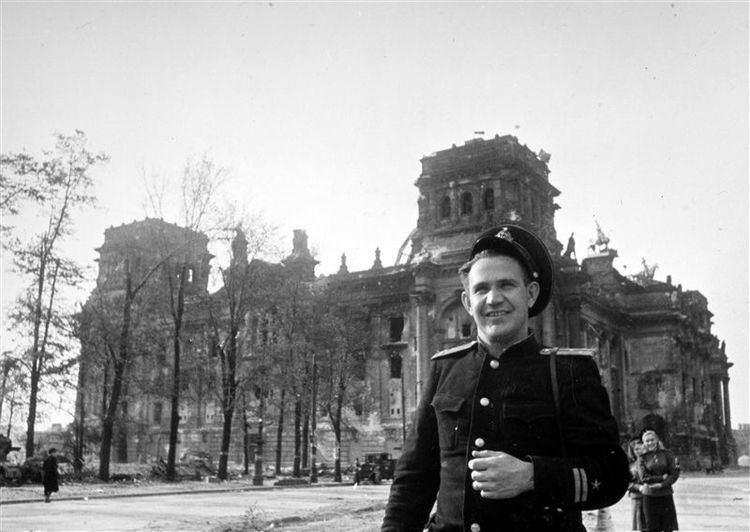 | ||
Children Anna Khaldei, Leonid Khaldei | ||
Ww ii traces of conflict 1941 1945 yevgeny khaldei
Yevgeny Anan'evich Khaldei (23 March [O.S. 10 March] 1917 – 6 October 1997) was a Red Army photographer, best known for his World War II photograph of a Soviet soldier Raising a flag over the Reichstag, in Berlin, capital of the vanquished Nazi Germany.
Contents
- Ww ii traces of conflict 1941 1945 yevgeny khaldei
- Life
- Works
- Red Army Reichstag photo
- Honours and awards
- References

Life

Khaldei was born to a Jewish family in Yuzovka (now Donetsk, Ukraine) and was obsessed with photography since childhood, having built his first childhood camera with his grandmother's eyeglasses. He started working with the Soviet press agency TASS at the age of nineteen as a photographer. His father and three of his four sisters were murdered by the Nazis during the war.
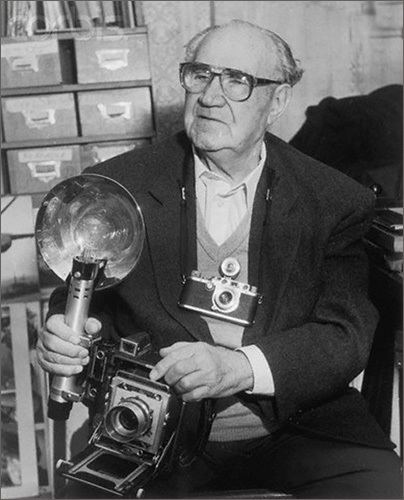
In 1945 he persuaded his uncle to create a large Soviet flag after seeing Joe Rosenthal's photo of the flag raising at Iwo Jima while the Soviet army closed in on Berlin and took it with him to Berlin for the Reichstag shot.
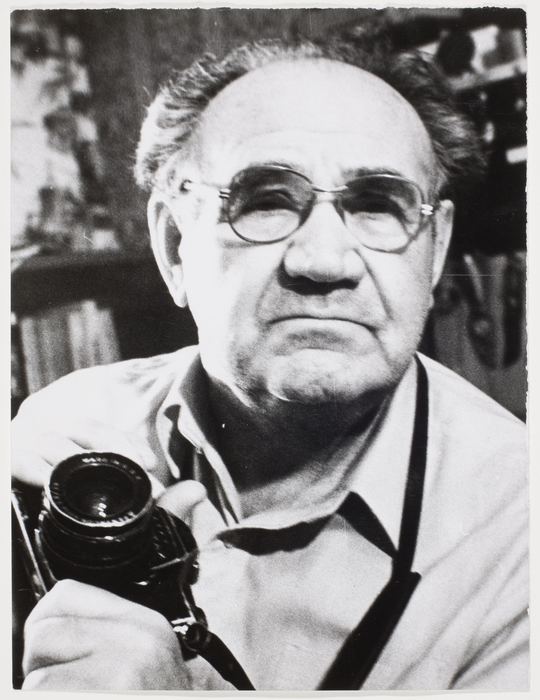
He later took photographs of the Nazis at the Nuremberg Trials and of the Red Army during its offensive in Japanese Manchuria.
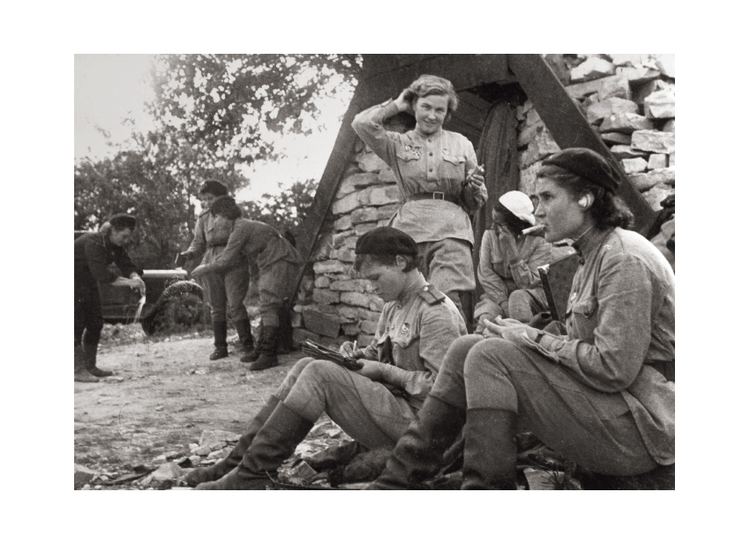
Khaldei continued to work in photojournalism after the war as a TASS staff photographer, but was reprimanded in a 1947 evaluation:
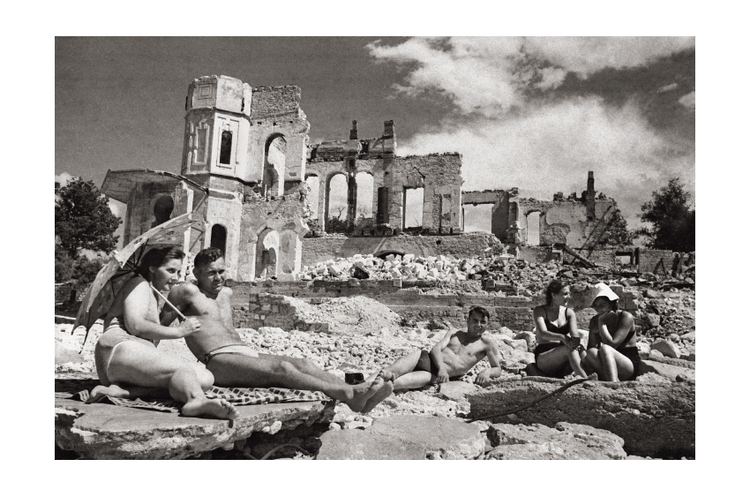
In October 1948, Khaldei received notice that he was being let go because of the agency's "staff downsizing." Khaldei himself attributed the firing to anti-Semitism.
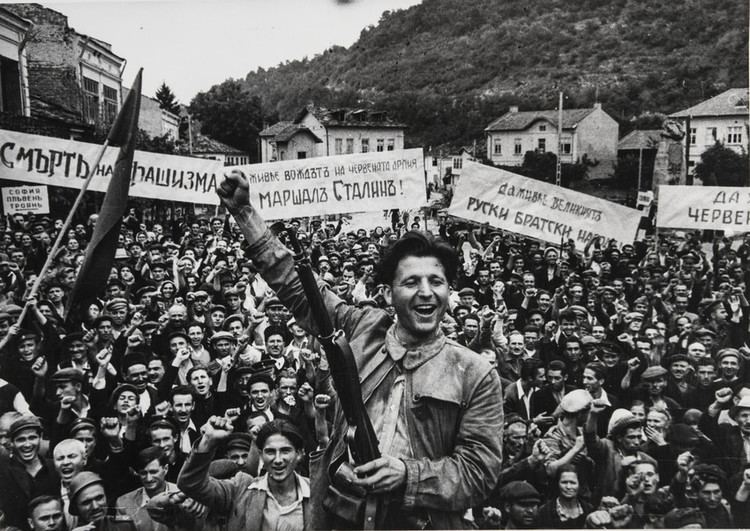
Khaldei continued to photograph, now working as a freelance photographer for Soviet newspapers, and focused on capturing the scenes of everyday life. In 1959, he got a job again at the newspaper Pravda, where he worked until he was forced to retire in 1970.
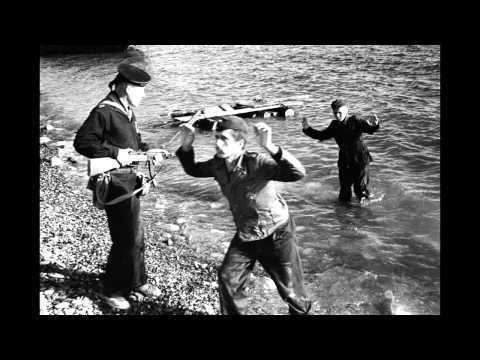
Khaldei's wartime photographs were collected in a 93-page book, Ot Murmanska do Berlina (From Murmansk to Berlin), published in 1984. His work continues to be distributed through the Sovfoto agency which has operated in the West since 1932. Khaldei's international fame dates from the 1990s, when exhibitions of his photographs began to be held in the West.
Works
Khaldei's most renowned photographs were taken when he was a Red Army photographer from 1941 to 1946. Khaldei's photographs emphasised his feelings for the historic moments and his sense of humour. One of the more famous anecdotes was during the Nuremberg Trials, where Hermann Göring was being tried. Khaldei says about the Göring shot:
When we received orders to leave Nuremberg, I asked an American colleague to photograph me with Göring. Göring remembered that, because of me, he had been hit with a club, and hence he always turned his head aside when I came into the courtroom. When he noticed I wanted to get into the picture with him, he put down his hand in front of his face.
While Khaldei frequently staged or manipulated his photographs, he insisted that this was to signify the importance and add strength to a particular event. His work was also admired by the elites of the Soviet Union and he is renowned for creating commissioned portraits for State leaders such as Joseph Stalin, Mikhail Gorbachev and Boris Yeltsin.
Red Army Reichstag photo
Khaldei's most famous photo was of a Red Army soldier raising a Soviet flag above the German Reichstag at the end of World War II: the historic defeat of Nazi Germany in a war that cost the Soviet Union twenty millions lives; the magazine Ogoniok published the photograph on 13 May 1945. Khaldei had shot an entire roll of film, 36 images. One shot, along with some of its very similar versions, became the most iconic of the event (The Times identified one such version). The photograph is showing an adolescent Red Army soldier, Aleksei Kovalyev from Kiev, attaching the Soviet flag to the roof of the Reichstag, assisted by two other soldiers, Aleksei Goryachev (or rather Leonid Gorychev, depending on the source) from Minsk and Abdulkhakim Ismailov from Dagestan. Khaldei altered the photograph before publication, to hide evidence of looting (one soldier was wearing two watches, one on each wrist), later also adding smoke in the sky and a more visually impressive version of the flag. The official Soviet version of the story names the two better visible soldiers as Meliton Kantaria, thus a Georgian fellow countryman of Stalin's, and the Russian Mikhail Yegorov, instead of the actual three - a Ukrainian, a Belarusian and a Dagestani - probably for the obvious reasons. Ismailov's role in the photograph was identified by Kovalyev in a 1995 television documentary; the following year, President Boris Yeltsin honored Ismailov as a Hero of Russia.
The celebrated image is a re-enactment of an earlier flag-raising of which no photograph was taken, as it happened at 10:40 p.m. on 30 April 1945 while the building was actually still held by German troops. A group of four Soviet soldiers fought their way to the roof, where 23-year-old private Mikhail Minin climbed up on an equestrian statue representing Germany, to fasten an improvised flagpole to its crown. As that occurred at night and under fire, no photo could be taken. The next day German snipers shot down the flag. The surrender of the Reichstag came on 2 May 1945, and only after that did Khaldei scale the building along with the three soldiers which he had picked up randomly on his way. He was carrying with him a large flag sewn from three tablecloths by his uncle for this very purpose. The seams are indeed visible on the picture. More details at Raising a flag over the Reichstag.
